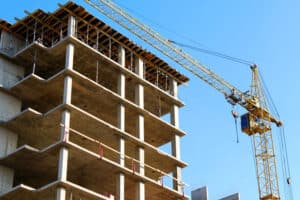What Is Building Structural Steel Inspection & Testing?
Building Structural Steel Inspection & Testing involves examining steel components used in construction to ensure they meet design specifications, industry standards, and safety regulations. This process includes visual inspections, Non-Destructive Testing (NDT) methods, and sometimes material testing to assess the quality, strength, and reliability of structural steel elements.
Why Is Structural Steel Inspection Important?
- Safety Assurance: Prevent structural failures by detecting defects or weaknesses early.
- Compliance: Ensure adherence to building codes, standards like AS1554 (Australian Standard for structural steel welding), and other regulations.
- Quality Control: Verify that fabrication and erection processes meet required specifications.
- Cost Savings: Avoid costly repairs or modifications by addressing issues during construction.
- Longevity: Enhance the durability and lifespan of the structure through proper inspection and maintenance.
Industries That Benefit from Structural Steel Inspection
Structural steel inspection is essential across various sectors where steel structures are integral:
Construction
- Buildings: Ensuring the safety and integrity of residential, commercial, and industrial buildings.
- Bridges: Verifying the strength and stability of steel components in bridge construction.
- Infrastructure: Inspecting towers, stadiums, and other large structures.
Engineering & Fabrication
- Manufacturers: Ensuring steel components are fabricated according to design and quality standards.
- Erection Companies: Verifying that steel structures are assembled correctly on-site.
Mining
- Facilities: Inspecting structural steel in mining facilities and equipment supports.
- Safety Structures: Ensuring protective structures meet safety requirements.
Oil & Gas
- Refineries and Plants: Verifying the integrity of steel structures supporting critical equipment.
- Offshore Platforms: Inspecting structural components exposed to harsh environments.
Power Generation
- Power Plants: Ensuring the stability of structures housing turbines, generators, and other equipment.
Transportation
- Railway Infrastructure: Inspecting bridges, stations, and other steel structures.
- Ports and Terminals: Verifying the integrity of loading docks and storage facilities.
Military & Defence
- Facilities: Ensuring the safety of steel structures in defence installations.
How Does the Structural Steel Inspection Process Work?
Here’s how we conduct Building Structural Steel Inspection & Testing:
1. Planning and Preparation
- Review Plans and Specifications: Understand the design requirements, standards, and acceptance criteria.
- Develop Inspection Plan: Outline the methods, areas to inspect, and schedule.
2. Visual Inspection
- Initial Assessment: Examine steel components for visible defects such as cracks, distortions, corrosion, or improper connections.
- Weld Inspection: Check welds for compliance with standards like AS1554, looking for defects like porosity, undercut, or misalignment.
- Bolted Connections: Inspect bolts and connections for proper installation and tension.
3. Non-Destructive Testing (NDT)
Apply NDT methods to detect hidden defects without causing damage:
- Ultrasonic Testing (UT): Detect internal flaws or discontinuities in welds and materials.
- Magnetic Particle Testing (MPI): Find surface and near-surface cracks in ferrous materials.
- Dye Penetrant Testing (DPI): Reveal surface-breaking defects in non-porous materials.
- Radiography (RT): Use X-rays or gamma rays to view internal structures.
- Visual Examination with Aids: Use tools like borescopes for hard-to-reach areas.
4. Material Testing (If Required)
- Hardness Testing: Assess material hardness to verify proper heat treatment.
- Chemical Analysis: Confirm material composition matches specifications.
5. Documentation
- Record Findings: Document all observations, test results, and any deviations from standards.
- Prepare Reports: Provide detailed reports with photographs, descriptions of defects, and recommendations.
6. Compliance Verification
- Review Against Standards: Ensure all aspects meet relevant standards and codes.
- Third-Party Certification (If Needed): Provide certification to verify compliance.
7. Corrective Actions
- Recommendations: Suggest repairs, rework, or additional testing if defects are found.
- Follow-Up Inspections: Verify that corrective actions have been properly implemented.
Benefits of Structural Steel Inspection & Testing
- Enhanced Safety: Protect workers and the public by ensuring structural integrity.
- Regulatory Compliance: Meet legal requirements and avoid penalties or project delays.
- Quality Assurance: Maintain high construction standards, leading to better project outcomes.
- Risk Mitigation: Identify and address issues before they escalate.
- Client Confidence: Provide assurance to stakeholders that the project meets all necessary standards.
FAQs
Q: What standards govern structural steel inspection in Australia?
A: Standards like AS1554 (for welding), AS4100 (Steel structures), and building codes provide guidelines for structural steel inspection and testing.
Q: At what stages should structural steel inspection occur?
A: Inspections should be performed during fabrication, erection, and upon completion. Regular inspections may also be required for maintenance.
Q: Can you inspect existing structures for integrity?
A: Yes, we can assess existing structures to identify issues like corrosion, fatigue, or damage from external factors.
Q: What qualifications do your inspectors have?
A: Our inspectors are certified and experienced in structural steel inspection, holding relevant qualifications such as AINDT certifications.
Q: Do you provide weld inspection and certification?
A: Yes, we offer certified weld inspection services to ensure compliance with welding standards and quality requirements.
Q: How do you handle inaccessible areas during inspection?
A: We use specialised equipment like borescopes, drones, or rope access techniques to inspect hard-to-reach areas safely.
Q: What happens if defects are found during inspection?
A: We document the defects and provide recommendations for corrective actions. Follow-up inspections can verify that issues have been resolved.
Q: Can you assist with developing an inspection plan for my project?
A: Absolutely, we can help create a tailored inspection plan that meets your project’s specific needs and complies with all relevant standards.
Ready to Ensure Your Structures Stand Strong?
Building Structural Steel Inspection & Testing is essential for the success and safety of your construction projects. Our experienced team uses advanced techniques to thoroughly assess your steel components, providing you with the confidence that your structures are built to last.









